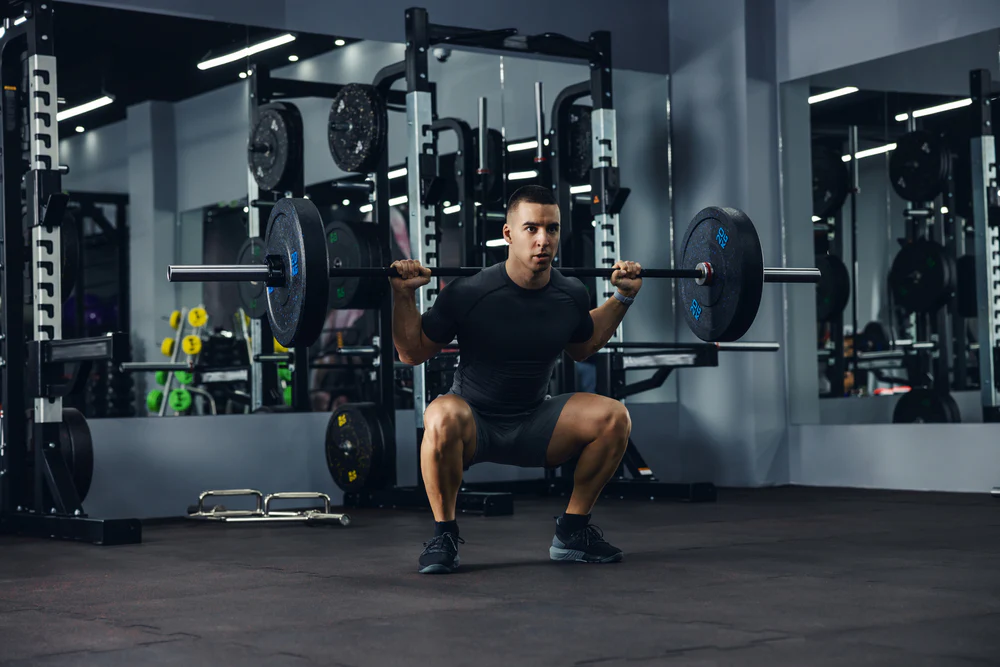Squats are the bread and butter of strength training. They work multiple muscle groups and are essential for building lower body strength and power.
But, let’s be real, squatting with bad form is a fast track to injuries that can last for a very long time. So, let’s talk about why good squat form matters and how you can get better at it.
Why Squat Form Matters
Nailing your squat form is a big deal for a few reasons. First off, it makes sure you’re hitting the right muscles. The squat is one of the best compound exercises, meaning it works multiple muscle groups. When you squat correctly, your quads, hamstrings, glutes, and core all get the workout they deserve.
Second, good form keeps your joints happy. Proper alignment spreads the load from the weight evenly, which means less stress on your knees and back.
Squat form can also make sure you aren’t risking injury. According to Lorenzetti, proper squat form minimizes excessive mediolateral knee movement, which can reduce the risk of lower limb injuries, especially in the knees and hips.
And finally, squatting right boosts your performance. Better form means better muscle activation, which means you can lift more weight, break plateaus, and get stronger faster.
According to research by Gregory D. Myer, proficiency in the back squat not only enhances athletic performance due to the but also strengthens the prime movers needed for explosive movements such as jumping and running. So if you want to be an athlete, you gotta get the squat right.
Tips to Improve Your Squat Form

Want to nail your squat and get the most out of one of the most effective lifts? Let’s break it down into three key areas: body alignment, depth, and breathing.
Body Alignment
Getting your body in the right position is half the battle. Here’s what you need to do:
- Stand with your feet about shoulder-width apart, toes slightly pointing out.
- Keep your chest up and eyes forward.
- Tighten your core by pulling your belly button towards your spine.
- Make sure your knees follow the same direction as your toes.
- Avoid rounding your back or over-arching it.
Maintaining correct alignment is crucial for safe and effective squatting. A neutral spine position during squats significantly reduces stress on the lumbar spine (Lorenzetti, S., Ostermann, 2018).
Nail these basic alignment corrections, and you’ll be squatting like a pro in no time.
Depth and Range of Motion
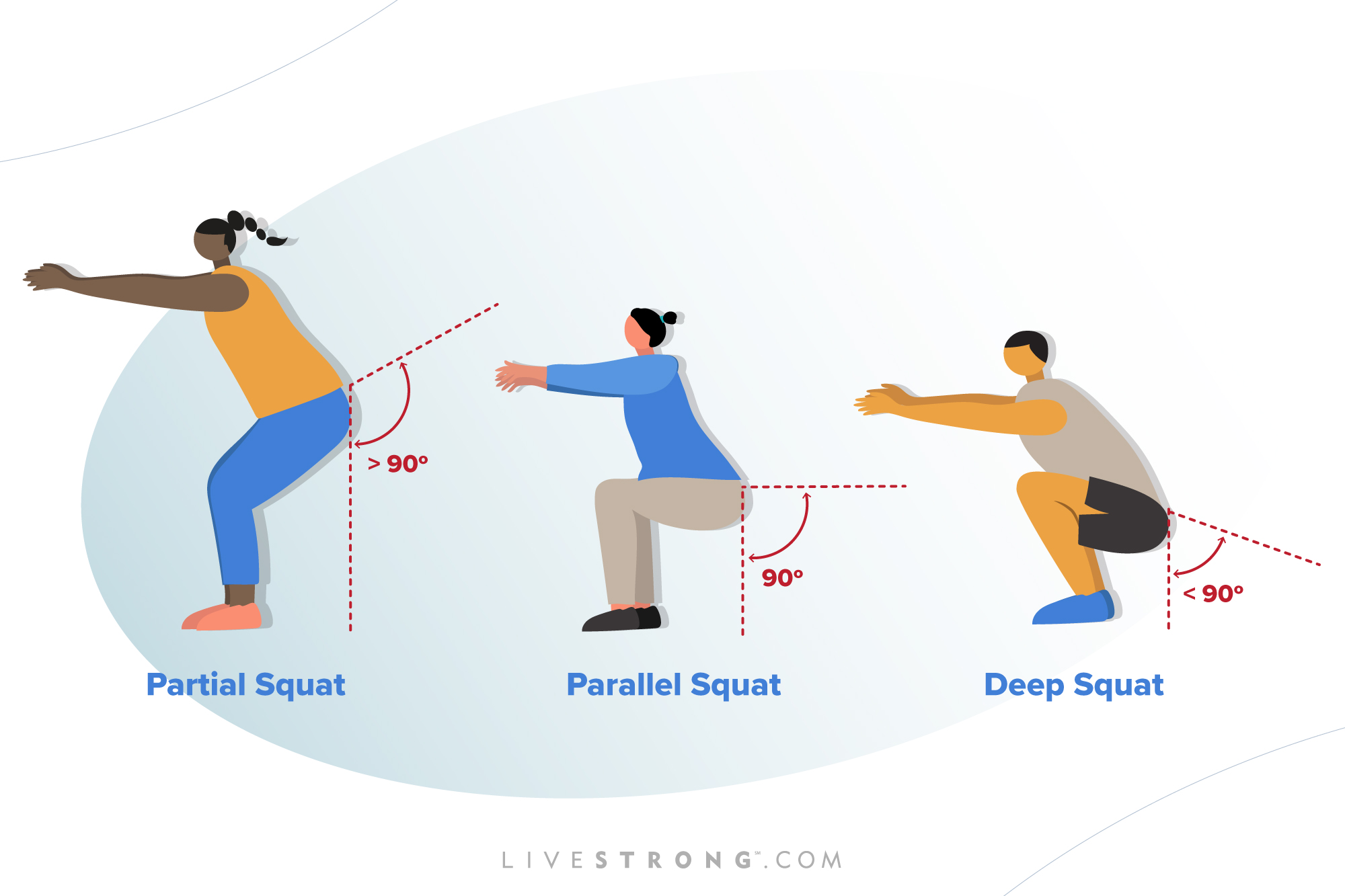
How low should you go? Well, it depends on your flexibility and mobility:
- Aim to squat until your thighs are parallel to the ground or a bit lower.
- If you’re flexible enough, going below parallel can really fire up those lower body muscles.
- Keep your knees aligned with your toes throughout the move.
- Work on increasing your range of motion gradually.
Everyone’s squat depth will be different, so find what works for you while keeping good form.
Breathing Techniques
Breathing right can make a big difference, so here’s how to do it during your squats:
- Take a deep breath before you start to squat down.
- Hold your breath as you lower yourself.
- Exhale forcefully as you push back up.
This breathing pattern helps stabilize your core and gives you extra support. For more on breathing while lifting, check out our breathing techniques guide.
By focusing on these tips, you’ll improve your squat form and get more out of your workouts.
As you get better, think about adding other exercises to strengthen your supporting muscles and help build a more balanced strength training program. Listen to your body, avoid common mistakes, and make sure to rest and recover to keep making progress and stay injury-free.
Check Your Squat Form
Before you start tweaking your squat, it’s smart to see where you’re at now. Knowing what you’re doing wrong can help you fix it and get better results.
Common Squat Mistakes

Squats work a bunch of muscles, so getting them right is key. Here are some goofs to watch out for:
- Not Going Low Enough: If you don’t squat deep enough, you’re missing out. Stopping short of parallel means your glutes and hamstrings aren’t getting the workout they need.
- Knees Caving In: When your knees buckle inward, it can mess up your knees and lead to injuries. Keep your knees in line with your toes to stay safe and stable.
- The knees are caving in is a particularly common issue that can lead to injuries. Research by Lorenzetti et al. shows that a wider stance can help reduce mediolateral knee displacement and decrease the risk of this happening.
- Leaning Forward: If you lean too far forward, you’re putting stress on your lower back and not working your legs as much. Keep your chest up to hit those quads, hamstrings, and glutes.
- Heels Coming Up: If your heels lift off the ground, you’re off balance and stressing your knees. Keep your feet flat to stay stable and engage the right muscles.
Spotting Your Own Mistakes
To see what you’re doing wrong, record yourself squatting from different angles (front, side, and back). Look for any of the mistakes mentioned above. You can also ask a professional trainer for advice—they can give you tips tailored specifically to you.
Another trick is to do a bodyweight squat in front of a mirror. Watch your alignment and depth, and see if anything looks off. If certain muscles feel more tired than others, you might have some imbalances to fix.
Knowing what to look for and spotting your own mistakes is the first step to better squats.
Other Ways to Improve Your Squat Game
Want to up your squat game and lift heavier? Let’s break it down into simple steps: warming up, strengthening the right muscles, and smart progression.
Warm-Up and Mobility Exercises
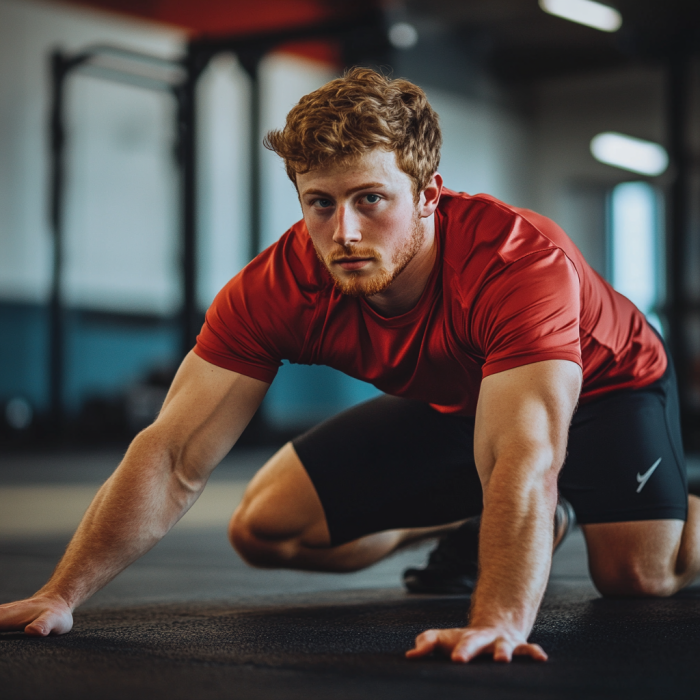
Before you start squatting like a beast, you gotta warm up and get those joints moving. This gets your blood pumping, loosens up tight muscles, and keeps injuries away.
Try these warm-up moves:
- Hip Circles: Stand with feet shoulder-width apart and rotate your hips in circles. Go both ways. This gets your hips ready for action.
- Leg Swings: Hold onto a wall or something stable. Swing one leg forward and back, then switch legs. This warms up your hip flexors and gets your legs moving.
- Ankle Rolls: Sit with legs straight out and rotate your ankles in circles. This helps you get that deep squat without any ankle issues.
Do these before you try to load up the barbell with heavy weights, and you’ll be seeing improvements in your squats quite quickly.
Strengthening Supporting Muscles
Squats aren’t just about quads and glutes. You need a strong core and back to keep everything stable.
Strengthening the supporting muscles such as the hip abductors and adductors can improve squat stability and reduce knee valgus, which is a known risk factor for injury. Lorenzetti emphasizes the importance of developing these muscles to ensure proper knee tracking during squats.
The most important supporting muscles:
- Core: A strong core keeps you upright. Do planks, Russian twists, and leg raises to build that core strength.
- Back: Your back muscles, especially the erector spinae, keep you from tipping over. Deadlifts, rows, and back extensions are your friends here.
- Hip Abductors and Adductors: These muscles move your thighs in and out, helping with stability. Side leg raises, clamshells, and hip adductor exercises will do the trick.
Strengthen these muscles, and you’ll see a big difference in your squat stability and power.
Progression Strategies
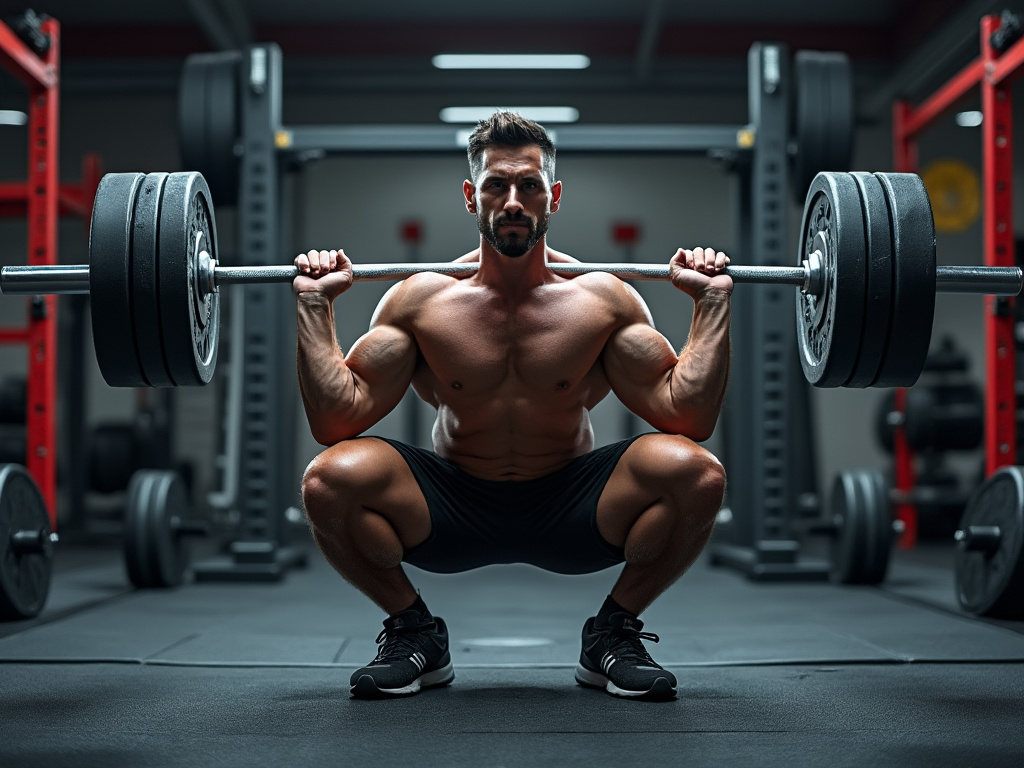
To keep getting stronger, you need to challenge yourself. Here’s how:
- Add Weight Gradually: Once you’re comfy with your current weight, add a bit more. This helps your muscles grow stronger over time.
- Mix It Up: Try different squat variations like front squats, goblet squats, or Bulgarian split squats. Each one targets different muscles and keeps things interesting.
- Periodization: Plan your training in cycles with different intensities and volumes. This prevents plateaus and keeps you progressing. Mix high-volume and low-volume phases or focus on different strength qualities in each block.
Keep pushing yourself, and you’ll see those squat numbers go up.
Benefits of Improving Your Squat Form
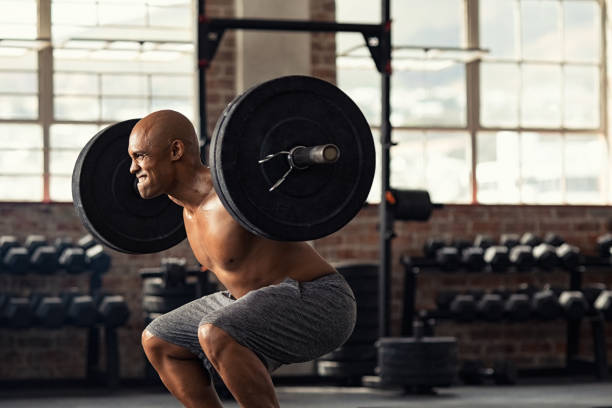
Getting your squat form on point comes with a bunch of benefits. Here are a few:
- Bigger Muscles: Squatting right targets your lower body muscles more effectively, helping you build strength and size.
- Fewer Injuries: Good form means less risk of strains, sprains, and other nasty injuries. Your joints will thank you.
- Enhancing your squat technique is crucial for injury prevention. A well-executed back squat, helps in identifying functional deficits that, if uncorrected, can increase the risk of training-induced injuries. This makes mastering squat form a key component in maintaining long-term physical health (Myer, 2014).
- Better Posture and Balance: Squats strengthen your core, which helps you stand taller and stay balanced, both in and out of the gym.
- Functional Strength: Squats mimic everyday movements. Improve your form, and you’ll find daily tasks like lifting groceries or climbing stairs easier.
- Myer and his team explain that the back squat is integral for improving performance in tasks that mimic everyday movements, such as lifting and carrying heavy objects, thereby improving overall quality of life (Myer, 2014).
- More Flexibility: Proper squats require good depth and range of motion. Focus on form, and you’ll get more flexible over time.
- Additionally, correcting squat form can lead to better overall performance by optimizing the range of motion and muscle recruitment (Myer, 2014).
- Joint Stability: The back squat helps in identifying biomechanical deficits such as muscle weakness or joint instability, which when corrected, facilitate smoother and more efficient movement patterns, reducing stress on the knees and back (Myer, 2014).
Understanding why squat form matters and the benefits of improving it sets you up for success.
Conclusion
Mastering your squat form is essential for maximizing strength gains, preventing injuries, and improving overall performance. By focusing on proper body alignment, depth, and breathing, you can ensure that you’re targeting the right muscles while protecting your joints.
With consistent practice, attention to form, and smart progression, you’ll be able to lift heavier and see real results.
Keep refining your squat technique, listen to your body, and you will reap the benefits of this fundamental strength exercise. Now you have all the tips you need to squat correctly, so…. Let’s get to work!
Sources
-
Myer GD, Kushner AM, Brent JL, Schoenfeld BJ, Hugentobler J, Lloyd RS, Vermeil A, Chu DA, Harbin J, McGill SM. The back squat: A proposed assessment of functional deficits and technical factors that limit performance. Strength Cond J. 2014 Dec 1;36(6):4-27. doi: 10.1519/SSC.0000000000000103. PMID: 25506270; PMCID: PMC4262933.
- Lorenzetti, S., Ostermann, M., Zeidler, F., Zimmer, P., Jentsch, L., List, R., Taylor, W. R., & Schellenberg, F. (2018). How to squat? Effects of various stance widths, foot placement angles and level of experience on knee, hip and trunk motion and loading. BMC Sports Science, Medicine and Rehabilitation, 10(103), https://doi.org/10.1186/s13102-018-0103-7.

